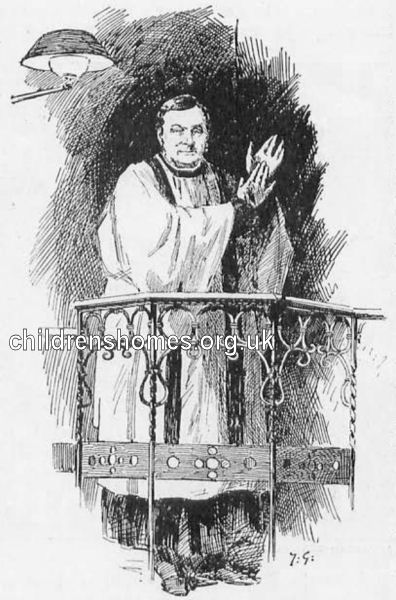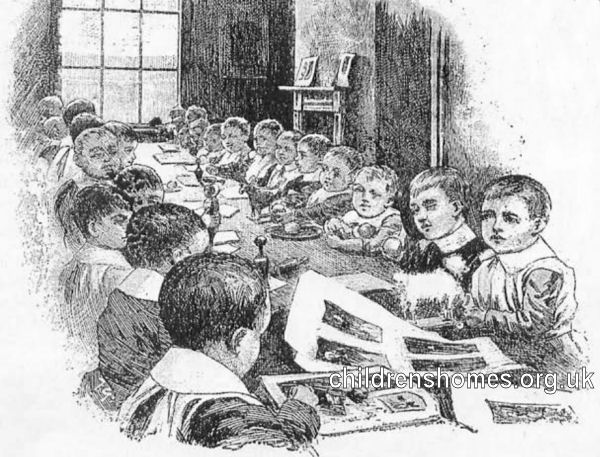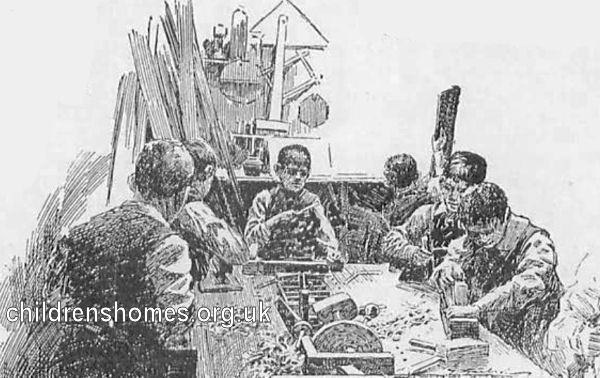Stainer's Homes for Deaf and Dumb Children, London
The Rev William Stainer's Homes for Deaf and Dumb Children were founded in 1875. Their creation was due indirectly to the London School Board, which, early in its history, discovered that there were nearly 400 children within its jurisdiction who were not being educated because they were deaf and dumb. Sir Charles Reed, the chairman of the Board, consulted with Stainer, then chaplain to the Royal Society for the Deaf and Dumb, who in 1842 had become a teacher at the Deaf Asylum on Old Kent Road. As a result of their discussions, Stainer drew up a scheme to provide centres for the instruction of these children, located in School Board schools. These were quickly followed by the provision of weekday accommodation near each of the schools for children who lived too far away to attend them on a daily basis. Stainer, who was also the brother of the composer Sir John Stainer, opened the first of these homes, for which he provided the money himself. He was subsequently assisted by a number of deaf and dumb ladies, who not only collected subscriptions, but gave a hand in the general work of the charity, which was also known as the Ladies' Christian Homes for Deaf and Dumb children.

Rev William Stainer. © Peter Higginbotham
The locations of the homes and their dates of opening were as follows:
- 66, 70, 72, 74 and 80 Pentonville Road N1 (1875 onwards)
- 1 (later 6) Victoria Park Square, Bethnal Green E2 (1877)
- 13 Paddington Green W2 (1884)
- 37 Camberwell Green SE5(1885)
- 18 Clapton Square E5 (c.1893, replacing Victoria Park Square)
Children as young as 4 years were received in the homes, each having to be paid for at the rate of 7s. a week. On 1 June 1886, all the premises then in operation were authorised to operate as Certified Schools, allowing them to receive children boarded out from workhouses by the Poor Law authorities. However, Boards of guardians could send deaf and dumb children to the homes without the parents becoming paupers.
The children received instruction under the 'oral' system, first teaching them to articulate and to speak, and gradually leading them on to reading, writing, arithmetic and geography. The children sat at specially constructed desks in rooms set apart for them.

Kindergarten at Rev Stainer's Home, Pentonville, c.1892.
In 1887, workrooms at 80 Pentonville Road allowed training also to be given in wood carving, slöjd turning by steam power, fretwork, carpentry, shoe-making, tailoring and tin work. At about that date, a laundry was erected at the rear of the property, in whose construction the boys assisted, including the making of doors and window sashes. 70 Pentonville Road was fitted with workrooms for girls, who were taught plain sewing, machine work, and given some instruction in washing and ironing. 72 and 74 Pentonville Road were fitted with kindergarten and other apparatus for infant amusement and instruction. The Bethnal Green home was used for boys under 12 years of age, while Camberwell Green and Paddington Green accommodated girls and little boys. By 1893, the Pentonville Road houses could accommodate 150 children, with 50 more at the Paddington Green, Camberwell Green and Clapton Square Homes.

Workshops at Rev Stainer's Home, Pentonville, c.1892.
The homes closed in the early 1900s when the London School Board, taken over by the London County Council in 1904, began to establish its own residential schools.
Records
Note: many repositories impose a closure period of up to 100 years for records identifying individuals. Before travelling a long distance, always check that the records you want to consult will be available.
- None identfied at present — any information welcome.
Bibliography
- Higginbotham, Peter Children's Homes: A History of Institutional Care for Britain's Young (2017, Pen & Sword)
- Pritchard, D.G., Education and the Handicapped 1760-1960 (1963, Routledge & Kegan Paul)
- Watson, J, Instruction of the Deaf and Dumb (1809)
- Watson, Thomas J., A History of Deaf Education in Scotland 1760-1939 (Unpublished PhD Thesis, University of Edinburgh, 1949)
Links
Except where indicated, this page () © Peter Higginbotham. Contents may not be reproduced without permission.


